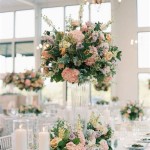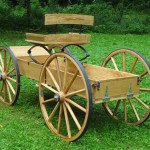Edible Flower Decorations For Cupcakes
Edible flowers offer an elegant and natural way to enhance the visual appeal of cupcakes. They provide a unique aesthetic, moving beyond traditional frosting designs and sprinkles. The incorporation of edible flowers introduces vibrant colors, intricate textures, and subtle flavors, elevating the cupcake from a simple treat to a sophisticated dessert. This article will explore the key considerations for selecting, preparing, and using edible flowers for cupcake decorations.
Selecting the right edible flowers is crucial for both aesthetic appeal and safety. Not all flowers are safe to eat, and some may even be toxic. It is essential to source edible flowers from reputable suppliers who specialize in their cultivation and handling. These suppliers ensure that the flowers are grown without the use of harmful pesticides or herbicides, making them safe for consumption. Furthermore, understanding the flavor profiles of different edible flowers is important to complement the cupcake flavor and avoid any unpleasant taste combinations.
Preparation is another key aspect of using edible flowers for cupcake decorating. Proper washing and drying are essential to remove any dirt, insects, or other contaminants that may be present. Depending on the flower type, some preparation techniques may be necessary to enhance the flavor or texture. For example, removing the pistils and stamens from some flowers can reduce bitterness, while gently blanching certain petals can soften their texture. Understanding these preparation techniques ensures that the edible flowers are both safe and enjoyable to eat.
The arrangement of edible flowers on cupcakes allows for creative expression and personalized designs. From simple, single-flower accents to elaborate floral arrangements, the possibilities are endless. Considering the color, shape, and size of the flowers in relation to the cupcake's frosting and overall design is important for creating a visually balanced and appealing presentation. Different techniques, such as layering petals, creating miniature bouquets, or arranging flowers in a cascading pattern, can be used to achieve various aesthetic effects.
Identifying Safe and Flavorful Edible Flowers
Choosing the correct type of edible flower is essential for a successful cupcake decoration endeavor. It is paramount to avoid using any flowers from unknown sources or those treated with chemicals. Buying from reputable suppliers who specialize in edible flowers ensures safety and guarantees the flowers are suitable for consumption.
Several edible flower varieties are popular choices for cupcake decoration due to their flavor, color, and ease of use. Pansies and violas are known for their delicate, slightly sweet flavor and wide range of colors, making them versatile for various cupcake themes. Roses offer a classic and elegant touch, with their subtle floral fragrance and varying shades of pink, red, and white. Nasturtiums provide a peppery, slightly spicy flavor and vibrant orange, yellow, and red hues, adding a unique zest to cupcakes. Calendula petals have a slightly bitter, earthy flavor and bright yellow or orange color, bringing a touch of warmth and brightness. Lavender is prized for its aromatic fragrance and sweet, floral flavor, complementing cupcakes with a soothing and sophisticated note. Cornflowers, with their mild, slightly sweet flavor and striking blue petals, add a cool and refreshing element.
Beyond the more common choices, other less frequently used edible flowers can also offer unique flavors and aesthetics. Borage flowers, with their cucumber-like flavor and star-shaped blue petals, can add a refreshing twist. Chamomile flowers, with their gentle, apple-like flavor and delicate white petals, provide a calming and comforting touch. Dianthus, also known as Sweet William, offers a clove-like flavor and vibrant pink, red, and white colors. Squash blossoms, with their mild, slightly sweet flavor and delicate yellow or orange petals, can be used creatively in savory-sweet cupcake combinations.
When selecting edible flowers, it is also important to consider the color palette of the cupcake. Coordinating the flower colors with the frosting and other decorations creates a harmonious and visually appealing design. For example, yellow calendula petals can complement chocolate cupcakes with vanilla frosting, while purple violas can enhance lemon cupcakes with cream cheese frosting. The interplay of colors adds depth and interest to the overall presentation.
Proper Preparation Techniques for Edible Flowers
Once the edible flowers have been selected, proper preparation is crucial for ensuring their safety and enhancing their flavor and texture. The first step is to gently wash the flowers under cool running water to remove any dirt, insects, or other debris. Avoid using harsh soaps or detergents, as these can leave a residue that is harmful to consume. A soft brush can be used to gently clean delicate petals.
After washing, the flowers should be thoroughly dried. This can be done by gently patting them with a clean paper towel or laying them on a drying rack. Ensure that the flowers are completely dry before using them for decoration, as excess moisture can cause the frosting to become soggy or the flowers to wilt. A salad spinner can be used to remove excess water from larger, more robust flowers.
Depending on the type of edible flower, additional preparation techniques may be necessary. For some flowers, such as roses and dianthus, removing the petals from the stem is recommended. This allows for easier arrangement and prevents the stem from imparting a bitter flavor. The base of the petals, where they attach to the stem, can sometimes be slightly bitter, so removing this part can improve the overall taste.
For flowers with noticeable stamens and pistils, such as lilies and some varieties of roses, removing these parts is advisable. The stamens contain pollen, which can be bitter and may cause allergic reactions in some individuals. The pistil, the female reproductive part of the flower, can also have a slightly bitter taste. Removing these parts ensures that the edible flowers are both safe and enjoyable to eat.
Some edible flowers, such as pansies and violas, can be used whole, while others, like calendula, are best used as individual petals. Understanding the structure and composition of each flower type allows for optimal preparation and presentation. Consider experimenting with different preparation techniques to discover what works best for each flower and cupcake combination.
Creative Cupcake Decoration Ideas with Edible Flowers
The application of edible flowers to cupcakes opens up a world of creative possibilities. From simple and elegant designs to elaborate and whimsical arrangements, the options are limitless. The key is to consider the color, shape, and size of the flowers in relation to the cupcake's frosting and overall theme.
A simple and effective technique is to use a single, perfectly formed edible flower as the focal point of the cupcake. A pansy or viola, with its vibrant colors and delicate petals, can be placed directly on top of the frosting. This creates an elegant and understated look that is perfect for formal occasions. Consider using a contrasting color between the flower and the frosting to make the flower stand out.
For a more elaborate design, create a miniature floral bouquet on top of the cupcake. This can be achieved by layering several different types of edible flowers, such as roses, lavender, and cornflowers, to create a visually stunning arrangement. Secure the flowers in place with a small dab of frosting or edible glue. Varying heights and textures within the bouquet add depth and interest.
Another creative technique is to arrange edible flower petals in a cascading pattern down the side of the cupcake. This creates a dynamic and flowing design that is particularly effective for cupcakes with tall, swirled frosting. The petals can be arranged in a single color or in a gradient of colors to create a visually striking effect. Edible glue may be needed to securely attach the petals to the frosting.
Edible flowers can also be combined with other decorations, such as sprinkles, edible glitter, and frosting swirls, to create unique and personalized cupcake designs. Consider using a complementary color palette to ensure that all the elements work together harmoniously. For example, pastel-colored flowers can be paired with pastel-colored sprinkles for a soft and whimsical look.
For themed cupcakes, select edible flowers that complement the theme. For example, for a garden-themed cupcake, use a variety of colorful flowers, such as roses, pansies, and nasturtiums, to create a miniature garden on top of the cupcake. For a rustic-themed cupcake, use edible flowers with earthy tones, such as calendula and chamomile, to create a natural and organic look.
Ultimately, the key to successful cupcake decoration with edible flowers is to experiment and have fun. Try different combinations of flowers, colors, and textures to discover what works best for each individual cupcake. With a little creativity and attention to detail, edible flowers can transform cupcakes into stunning works of art.

Mini Cupcakes With Edible Flowers

Edible Flower Cupcakes Fl Delights You Ll Remember

Edible Flower Cake Decorations Fall Colored Mums Cupcake And Toppers Flowers Fl

10 Incredible Edible Flowers For Dressing Up Cakes And Desserts
Our Favorite Edible Flower Recipes That Are Colorful Delicious

Ercream Flower Cupcakes

Pre Cut Pretty Wafer Flowers Edible Cake Cupcake Decorations

Edible Flowers Cupcakes

Using Edible Flowers On Cupcakes

Fresh Edible Flowers Violas Mixed 50 Count








